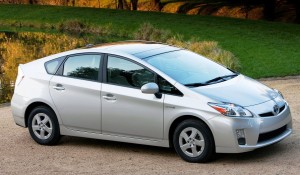Despite – or perhaps because of — an increased focus on safety, recalls reached a six-year high in the U.S. last year.
Confirming an earlier report by TheDetroitBureau.com, the National Highway Traffic Safety Administration announced today that a total of 20.3 million cars, trucks and crossovers were called back for safety-related repairs in 2010, the largest total since 2004. (Click Here for that earlier report.)
 A major factor was the surge in recalls by Toyota Motor Co., which faced the worst safety scandal in its history, the Toyota, Scion and Lexus brands collectively recalling 7.1 million vehicles in the U.S. last year during 19 separate campaigns for problems ranging from sticky accelerators to brake problems with the Prius hybrid. (Worldwide, Toyota recalled 11 million vehicles.)
A major factor was the surge in recalls by Toyota Motor Co., which faced the worst safety scandal in its history, the Toyota, Scion and Lexus brands collectively recalling 7.1 million vehicles in the U.S. last year during 19 separate campaigns for problems ranging from sticky accelerators to brake problems with the Prius hybrid. (Worldwide, Toyota recalled 11 million vehicles.)
But government data show that only Ford, among the six largest automotive brands operating in the U.S. saw a decline in the number of vehicles involved in recalls in 2010.
Toyota’s problems may be affecting the entire industry, many analysts contend. The maker took tremendous heat for delaying its response to various safety problems. That resulted in three record fines levied by the NHTSA, for a total of $48.8 million.
But that understates the financial impact of a scandal that has severely tarnished Toyota’s once-sterling reputation and may now be encouraging the Japanese maker to “over-react,” suggests analyst Jim Hall, of 2953 Analytics, by recalling products where, in the past, a Technical Service Bulletin might have sufficed. With a TSB, dealers are notified of a potential problem and advised to make repairs if a customer needs, but it does not require notifying all owners of an affected vehicle to come back for repairs.
Analysts say other makers are following Toyota’s lead, especially in light of a promise by U.S. Department of Transportation Secretary Ray LaHood to crack down on the industry. The Toyota case led to embarrassing revelations suggesting Toyota was able to convince complacent regulators to ease off – in one case downsizing a recall for sudden acceleration problems and saving the maker an estimated $100 million.
Significantly, second on the 2010 recall list was Honda, which staged 15 separate campaigns involving 2.4 million vehicles. Last year wasn’t good for any of the major Japanese makers, at least on the recall front, Nissan launching 16 campaigns involving 2.1 million cars, trucks and crossovers.
While it had the third-largest recall tally, General Motors called back less than a third as many vehicles as Toyota in 2010, a total of 2.2 million, in 16 separate campaigns. That was just over half the 4 million vehicles GM recalled in 2009.
Ford, on the other hand, saw its recall count drop nearly 90% in 2010, to just 581,000 from the prior year’s 4.5 million. The 2009 tally was driven, in large part, by a problem with a cruise control deactivation switch dating back to 2003 with Windstar minivans.
While the industry may be acting more proactively on safety-related matters, analysts also note that as manufacturers work to reduce costs they are risking larger recalls because components are now routinely shared across a variety of different product lines. A defect can thus have a much greater impact in terms of raw numbers.

